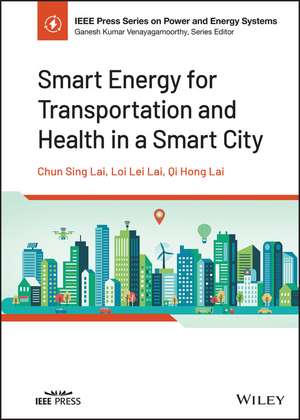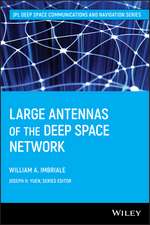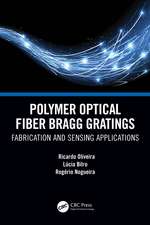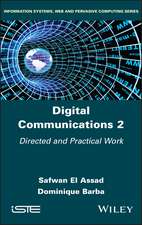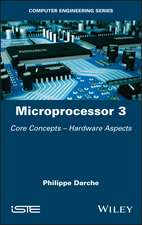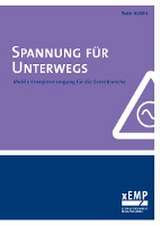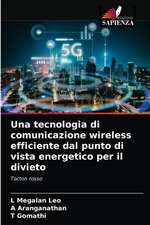Smart Energy for Transportation and Health in a Smart City: IEEE Press Series on Power and Energy Systems
Autor CS Laien Limba Engleză Hardback – 15 noi 2022
Smart Energy for Transportation and Health in a Smart City offers an essential guide to the functions, characteristics, and domains of smart cities and the energy technology necessary to sustain them. The authors--noted experts on the topic--include the theoretical underpinnings, the practical information, and the potential benefits for the development of smart cities.
The book includes information on various financial models of energy storage, the management of networked micro-grids, coordination of virtual energy storage systems, reliability modeling and assessment of cyber space, and the development of a vehicle-to-grid voltage support. The authors review smart transportation elements such as the advanced metering infrastructure for electric vehicle charging, power system dispatching with plug-in hybrid electric vehicles, and the best practices for low power wide area network technologies. In addition, the book explores smart health that is based on the Internet of Things and smart devices that can help improve patient care processes and decrease costs while maintaining quality. This important resource:
- Examines the challenges and opportunities that arise with the development of smart cities
- Presents a state-of-the-art financial models of smart energy storage
- Clearly explores the elements of a smart city based on the advancement of information and communication technology
- Contains a review of advances in smart health for smart cities
- Includes a variety of real-life case studies that illustrate the various components of a smart city
Din seria IEEE Press Series on Power and Energy Systems
- 24%
 Preț: 652.67 lei
Preț: 652.67 lei - 24%
 Preț: 609.53 lei
Preț: 609.53 lei - 19%
 Preț: 521.21 lei
Preț: 521.21 lei - 24%
 Preț: 784.16 lei
Preț: 784.16 lei - 24%
 Preț: 1053.86 lei
Preț: 1053.86 lei - 9%
 Preț: 809.68 lei
Preț: 809.68 lei - 9%
 Preț: 831.27 lei
Preț: 831.27 lei - 9%
 Preț: 888.01 lei
Preț: 888.01 lei - 9%
 Preț: 950.76 lei
Preț: 950.76 lei - 9%
 Preț: 869.23 lei
Preț: 869.23 lei - 9%
 Preț: 1196.97 lei
Preț: 1196.97 lei - 9%
 Preț: 849.90 lei
Preț: 849.90 lei - 9%
 Preț: 1015.99 lei
Preț: 1015.99 lei - 8%
 Preț: 654.00 lei
Preț: 654.00 lei - 8%
 Preț: 633.18 lei
Preț: 633.18 lei - 9%
 Preț: 823.81 lei
Preț: 823.81 lei - 9%
 Preț: 759.78 lei
Preț: 759.78 lei - 9%
 Preț: 855.00 lei
Preț: 855.00 lei - 9%
 Preț: 972.84 lei
Preț: 972.84 lei - 9%
 Preț: 1023.14 lei
Preț: 1023.14 lei - 9%
 Preț: 758.19 lei
Preț: 758.19 lei - 9%
 Preț: 946.67 lei
Preț: 946.67 lei - 9%
 Preț: 1002.09 lei
Preț: 1002.09 lei - 8%
 Preț: 648.70 lei
Preț: 648.70 lei - 9%
 Preț: 1077.09 lei
Preț: 1077.09 lei - 9%
 Preț: 1118.73 lei
Preț: 1118.73 lei - 9%
 Preț: 1017.31 lei
Preț: 1017.31 lei - 9%
 Preț: 814.32 lei
Preț: 814.32 lei - 9%
 Preț: 830.83 lei
Preț: 830.83 lei - 9%
 Preț: 834.87 lei
Preț: 834.87 lei - 9%
 Preț: 893.28 lei
Preț: 893.28 lei - 9%
 Preț: 929.27 lei
Preț: 929.27 lei - 9%
 Preț: 1301.39 lei
Preț: 1301.39 lei - 9%
 Preț: 855.70 lei
Preț: 855.70 lei - 9%
 Preț: 781.26 lei
Preț: 781.26 lei - 9%
 Preț: 1009.20 lei
Preț: 1009.20 lei - 9%
 Preț: 886.41 lei
Preț: 886.41 lei - 9%
 Preț: 730.17 lei
Preț: 730.17 lei - 9%
 Preț: 822.19 lei
Preț: 822.19 lei - 9%
 Preț: 963.72 lei
Preț: 963.72 lei - 9%
 Preț: 726.13 lei
Preț: 726.13 lei - 9%
 Preț: 953.44 lei
Preț: 953.44 lei - 9%
 Preț: 851.69 lei
Preț: 851.69 lei - 9%
 Preț: 1200.59 lei
Preț: 1200.59 lei - 9%
 Preț: 947.55 lei
Preț: 947.55 lei - 9%
 Preț: 777.30 lei
Preț: 777.30 lei - 9%
 Preț: 715.62 lei
Preț: 715.62 lei - 9%
 Preț: 786.64 lei
Preț: 786.64 lei - 9%
 Preț: 962.47 lei
Preț: 962.47 lei - 9%
 Preț: 810.41 lei
Preț: 810.41 lei
Preț: 776.19 lei
Preț vechi: 852.96 lei
-9% Nou
Puncte Express: 1164
Preț estimativ în valută:
148.52€ • 155.07$ • 122.92£
148.52€ • 155.07$ • 122.92£
Carte tipărită la comandă
Livrare economică 04-18 aprilie
Preluare comenzi: 021 569.72.76
Specificații
ISBN-13: 9781119790334
ISBN-10: 1119790336
Pagini: 576
Dimensiuni: 178 x 254 x 34 mm
Greutate: 1.2 kg
Editura: Wiley
Seria IEEE Press Series on Power and Energy Systems
Locul publicării:Hoboken, United States
ISBN-10: 1119790336
Pagini: 576
Dimensiuni: 178 x 254 x 34 mm
Greutate: 1.2 kg
Editura: Wiley
Seria IEEE Press Series on Power and Energy Systems
Locul publicării:Hoboken, United States
Cuprins
Foreword xv
Preface xvii
Authors' Biography xxi
Acknowledgments xxiii
1 What Is Smart City? 1
1.1 Introduction 1
1.2 Characteristics, Functions, and Applications 4
1.2.1 Sensors and Intelligent Electronic Devices 4
1.2.2 Information Technology, Communication Networks, and Cyber Security 5
1.2.3 Systems Integration 6
1.2.4 Intelligence and Data Analytics 6
1.2.5 Management and Control Platforms 7
1.3 Smart Energy 7
1.4 Smart Transportation 11
1.4.1 Data Processing 11
1.5 Smart Health 12
1.6 Impact of COVID-19 Pandemic 12
1.7 Standards 14
1.7.1 International Standards for Smart City 14
1.7.2 Smart City Pilot Projects 19
1.8 Challenges and Opportunities 26
1.9 Conclusions 29
Acknowledgements 29
References 29
2 Lithium-Ion Storage Financial Model 37
2.1 Introduction 37
2.2 Literature Review 38
2.2.1 Techno-economic Studies of Biogas, PV, and EES Hybrid Energy Systems 38
2.2.2 EES Degradation 39
2.2.3 Techno-Economic Analysis for EES 41
2.2.4 Financing for Renewable Energy Systems and EES 42
2.3 Research Background: Hybrid Energy System in Kenya 46
2.3.1 Hybrid System Sizing and Operation 46
2.3.2 Solar and Retail Electricity Price Data 47
v
ftoc.3d 5 8/10/2022 8:29:08 PM
2.4 A Case Study on the Degradation Effect on LCOE 49
2.4.1 Sensitivity Analysis on the SOCThreshold 49
2.4.2 Sensitivity Analysis on PV and EES Rated Capacities 50
2.5 Financial Modeling for EES 52
2.5.1 Model Description 53
2.5.2 Case Studies Context 55
2.6 Case Studies on Financing EES in Kenya 57
2.6.1 Influence of WACC on Equity NPV and LCOS 57
2.6.2 Equity and Firm Cash Flows 58
2.6.2.1 Cash Flows for EES Capital Cost at 1500 $/kWh 58
2.6.2.2 Cash Flows for EES Capital Cost at 200 $/kWh 58
2.6.3 LCOS and Project Lifecycle Cost Composition 61
2.6.4 EES Finance Under Different Electricity Prices 63
2.6.4.1 Study on the Retail Electricity Price 63
2.7 Sensitivity Analysis of Technical and Economic Parameters 64
2.8 Discussion and Future Work 66
2.9 Conclusions 68
Acknowledgments 68
References 68
3 Levelized Cost of Electricity for Photovoltaic with Energy Storage 73
Nomenclature 73
3.1 Introduction 75
3.2 Literature Review 76
3.3 Data Analysis and Operating Regime 78
3.3.1 Solar and Load Data Analysis 78
3.3.2 Problem Context 79
3.3.3 Operating Regime 81
3.3.4 Case Study 84
3.4 Economic Analysis 86
3.4.1 AD Operational Cost Model 86
3.4.2 LiCoO2 Degradation Cost Model and Number of Replacements 86
3.4.3 Levelized Cost of Electricity Derivation 90
3.4.3.1 LCOE for PV 91
3.4.3.2 LCOE for AD 92
3.4.3.3 Levelized Cost of Storage (LCOS) 92
3.4.3.4 Levelized Cost of Delivery (LCOD) 93
3.4.3.5 LCOE for System 94
3.4.4 LCOE Analyses and Discussion 94
3.5 Conclusions 96
Acknowledgment 97
References 97
4 Electricity Plan Recommender System 101
Nomenclature 101
4.1 Introduction 102
4.2 Proposed Matrix Recovery Methods 105
4.2.1 Previous Matrix Recovery Methods 105
vi Contents
ftoc.3d 6 8/10/2022 8:29:09 PM
4.2.2 Matrix Recovery Methods with Electrical Instructions 106
4.2.3 Solution 107
4.2.4 Convergence Analysis and Complexity Analysis 111
4.3 Proposed Electricity Plan Recommender System 112
4.3.1 Feature Formulation Stage 112
4.3.2 Recommender Stage 112
4.3.3 Algorithm and Complexity Analysis 113
4.4 Simulations and Discussions 115
4.4.1 Recovery Simulation 115
4.4.2 Recovery Result Discussions 119
4.4.3 Application Study 121
4.4.4 Application Result Discussions 125
4.5 Conclusion and Future Work 126
Acknowledgments 127
References 127
5 Classifier Economics of Semi-intrusive Load Monitoring 131
5.1 Introduction 131
5.1.1 Technical Background 131
5.1.2 Original Contribution 132
5.2 Typical Feature Space of SILM 132
5.3 Modeling of SILM Classifier Network 134
5.3.1 Problem Definition 134
5.3.2 SILM Classifier Network Construction 135
5.4 Classifier Locating Optimization with Ensuring on Accuracy and Classifier
Economics 137
5.4.1 Objective of SILM Construction 137
5.4.2 Constraint of Devices Covering Completeness and Over Covering 137
5.4.3 Constraint of Bottom Accuracy and Accuracy Measurement 138
5.4.4 Constraint of Sampling Computation Requirements 138
5.4.5 Optimization Algorithm 139
5.5 Numerical Study 140
5.5.1 Devices Operational Datasets for Numerical Study 140
5.5.2 Feature Space Set for Numerical Study 140
5.5.3 Numerical Study 1: Classifier Economics via Different Meter Price and Different Accuracy
Constraints 141
5.5.3.1 Result Analysis via Row Variation in Table 5.5 143
5.5.3.2 Result Analysis via Column Variation in Table 5.5 143
5.5.3.3 Result Converging via Price Variation 144
5.5.4 Numerical Study 2: Classifier Economics via different Classifiers Models 146
5.6 Conclusion 147
Acknowledgements 147
References 147
6 Residential Demand Response Shifting Boundary 151
6.1 Introduction 151
6.2 Residential Customer Behavior Modeling 153
6.2.1 Multi-Agent System Modeling 153
Contents vii
ftoc.3d 7 8/10/2022 8:29:09 PM
6.2.2 Multi-agent System Structure for PBP Demand Response 153
6.2.3 Agent of Residential Consumer 155
6.3 Residential Customer Shifting Boundary 157
6.3.1 Consumer Behavior Decision-Making 157
6.3.2 Shifting Boundary 157
6.3.3 Target Function and Constraints 158
6.4 Case Study 160
6.4.1 Case Study Description 160
6.4.2 Residential Shifting Boundary Simulation under TOU 164
6.4.3 Residential Shifting Boundary Simulation Under RTP 169
6.5 Case Study on Residential Customer TOU Time Zone Planning 173
6.5.1 Case Study Description 173
6.5.2 Result and Analysis 173
6.6 Case Study on Smart Meter Installation Scale Analysis 178
6.6.1 Case Study Description 178
6.6.2 Analysis on Multiple Smart Meter Installation Scale under TOU and RTP 179
6.7 Conclusions and Future Work 181
Acknowledgements 181
References 182
7 Residential PV Panels Planning-Based Game-Theoretic Method 185
Nomenclature 185
7.1 Introduction 186
7.2 System Modeling 188
7.2.1 Network Branch Flow Model 188
7.2.2 Energy Sharing Agent Model 189
7.3 Bi-level Energy Sharing Model for Determining Optimal PV Panels Installation
Capacity 191
7.3.1 Uncertainty Characterization 191
7.3.2 Stackelberg Game Model 191
7.3.3 Bi-level Energy Sharing Model 192
7.3.4 Linearization of Bi-level Energy Sharing Model 194
7.3.5 Descend Search-Based Solution Algorithm 195
7.4 Stochastic Optimal PV Panels Allocation in the Coalition of Prosumer Agents 197
7.5 Numerical Results 199
7.5.1 Implementation on IEEE 33-Node Distribution System 199
7.5.2 Implementation on IEEE 123-Node Distribution System 205
7.6 Conclusion 206
Acknowledgements 207
References 207
8 Networked Microgrids Energy Management Under High Renewable Penetration 211
Nomenclature 211
8.1 Introduction 212
8.2 Problem Description 215
8.2.1 Components and Configuration of Networked MGs 215
8.2.2 Proposed Strategy 216
8.3 Components Modeling 216
viii Contents
ftoc.3d 8 8/10/2022 8:29:09 PM
8.3.1 CDGs 216
8.3.2 BESSs 217
8.3.3 Controllable Load 218
8.3.4 Uncertain Sets of RESs, Load, and Electricity Prices 218
8.3.5 Market Model 218
8.4 Proposed Two-Stage Operation Model 219
8.4.1 Hourly Day-Ahead Optimal Scheduling Model 219
8.4.1.1 Lower Level EMS 219
8.4.1.2 Upper Level EMS 220
8.4.2 5-Minute Real-Time Dispatch Model 221
8.5 Case Studies 222
8.5.1 Set Up 222
8.5.2 Results and Discussion 222
8.6 Conclusions 230
Acknowledgements 231
References 231
9 A Multi-agent Reinforcement Learning for Home Energy Management 233
Nomenclature 233
9.1 Introduction 233
9.2 Problem Modeling 236
9.2.1 State 238
9.2.2 Action 238
9.2.3 Reward 239
9.2.4 Total Reward of HEM System 239
9.2.5 Action-value Function 240
9.3 Proposed Data-Driven-Based Solution Method 240
9.3.1 ELM-Based Feedforward NN for Uncertainty Prediction 241
9.3.2 Multi-Agent Q-Learning Algorithm for Decision-Making 241
9.3.3 Implementation Process of Proposed Solution Method 241
9.4 Test Results 244
9.4.1 Case Study Setup 244
9.4.2 Performance of the Proposed Feedforward NN 244
9.4.3 Performance of Multi-Agent Q-Learning Algorithm 246
9.4.4 Numerical Comparison with Genetic Algorithm 249
9.5 Conclusion 251
Acknowledgements 251
References 251
10 Virtual Energy Storage Systems Smart Coordination 255
10.1 Introduction 255
10.1.1 Related Work 255
10.1.2 Main Contributions 257
10.2 VESS Modeling, Aggregation, and Coordination Strategy 257
10.2.1 VESS Modeling 257
10.2.2 VESS Aggregation 259
10.2.3 VESS Coordination Strategies 260
10.3 Proposed Approach for Network Loading and Voltage Management by VESSs 261
Contents ix
ftoc.3d 9 8/10/2022 8:29:09 PM
10.3.1 Network Loading Management Strategy 261
10.3.2 Voltage Regulation Strategy 264
10.4 Case Studies 267
10.4.1 Case 1 269
10.4.2 Case 2 269
10.5 Conclusions and Future Work 276
Acknowledgements 276
References 276
11 Reliability Modeling and Assessment of Cyber-Physical Power Systems 279
Nomenclature 279
11.1 Introduction 279
11.2 Composite Markov Model 282
11.2.1 Multistate Markov Chain of Information Layer 282
11.2.2 Two-state Markov Chain of Physical Layer 284
11.2.3 Coupling Model of Physical and Information Layers 285
11.3 Linear Programming Model for Maximum Flow 286
11.3.1 Node Classification and Flow Constraint Model 286
11.3.2 Programming Model for Network Flow 288
11.4 Reliability Analysis Method 289
11.4.1 Definition and Measures of System Reliability 289
11.4.2 Sequential Monte-Carlo Simulation 289
11.4.2.1 System State Sampling 289
11.4.2.2 Reliability Computing Procedure 290
11.5 Case Analysis 291
11.5.1 Case Description 291
11.5.2 Calculation Results and Analysis 293
11.5.2.1 Effect of Demand Flow on Reliability 293
11.5.2.2 Effect of Node Capacity on Reliability 295
11.5.2.3 Effect of the Information Flow Level on Reliability 297
11.6 Conclusion 298
Acknowledgements 299
References 299
12 A Vehicle-To-Grid Voltage Support Co-simulation Platform 301
12.1 Introduction 301
12.2 Related Works 303
12.2.1 Simulation of Power Systems 303
12.2.2 Simulation of Communication Network 304
12.2.3 Simulation of Distributed Software 305
12.2.4 Time Synchronization 305
12.2.5 Co-Simulation Interface 306
12.3 Direct-Execution Simulation 306
12.3.1 Operation of a Direct-Execution Simulation 307
12.3.1.1 Simulation Metadata 307
12.3.1.2 Enforcing Simulated Thread Scheduling 308
12.3.1.3 Tracking Action Timestamps 308
x Contents
ftoc.3d 10 8/10/2022 8:29:09 PM
12.3.1.4 Enforcing Timestamp Order 308
12.3.1.5 Handling External Events 308
12.3.2 DecompositionJ Framework 309
12.4 Co-Simulation Platform for Agent-Based Smart Grid Applications 310
12.4.1 Co-Simulation Message Exchange 311
12.4.2 Co-Simulation Time Synchronization 312
12.5 Agent-Based FLISR Case Study 312
12.5.1 The Restoration Problem 312
12.5.2 Reconfiguration Algorithm 314
12.5.3 Restoration Agents 315
12.5.4 Communication Network Configurations 316
12.6 Simulation Results 316
12.6.1 Agent Actions and Events 317
12.6.1.1 Phase 1 - Fault Detection 317
12.6.1.2 Phase 2 - Fault Location 317
12.6.1.3 Phase 3 - Enquire DERs 317
12.6.1.4 Phase 4 - Reconfiguration 320
12.6.1.5 Phase 5 - Transient 320
12.6.2 Effects of Background Traffics and Link Failure 321
12.6.3 Effects of Link Failure Time 322
12.6.4 Effects of Main-Container Location Configuration 323
12.6.5 Summary on Simulation Results 324
12.7 Case Study on V2G for Voltage Support 324
12.7.1 Modeling of Electrical Grid and EVs 324
12.7.2 Modeling of Communication Network 326
12.7.3 Simulation Events 327
12.7.4 Co-simulation Results 327
12.8 Conclusions 330
Acknowledgements 331
References 331
13 Advanced Metering Infrastructure for Electric Vehicle Charging 335
13.1 Introduction 335
13.2 EVAMI Overview 338
13.2.1 Advantage of Adopting EVAMI 338
13.2.2 Choice of Signal Transmission Platform 338
13.2.3 Onsite Charging System 340
13.2.4 EV Charging Station 340
13.2.5 Utility Information Management System 340
13.2.6 Third Party Customer Service Platform 341
13.3 System Architecture, Protocol Design, and Implementation 341
13.3.1 Communication Protocol 342
13.3.1.1 Charging Service Session Management 343
13.3.1.2 Device Management 344
13.3.1.3 Demand Response Management 346
13.3.2 Web Portal 347
13.4 Performance Evaluation 348
Contents xi
ftoc.3d 11 8/10/2022 8:29:09 PM
13.4.1 Network Performance of OCS 348
13.4.2 Effectiveness of EVAMI on Demand Response 348
13.5 Conclusion 351
Acknowledgements 352
References 352
14 Power System Dispatching with Plug-In Hybrid Electric Vehicles 355
Nomenclature 355
14.1 Introduction 357
14.1.1 Model Decoupling 357
14.1.2 Security Reinforcement 358
14.1.3 Potential for Practical Application 358
14.2 Framework of PHEVs Dispatching 358
14.3 Framework for the Two-Stage Model 359
14.4 The Charging and Discharging Mode 360
14.4.1 PHEV Charging Mode 360
14.4.2 PHEV Discharging Mode 360
14.4.3 PHEV Charging and Discharging Power 361
14.5 The Optimal Dispatching Model with PHEVs 361
14.5.1 Sub-Model 1 361
14.5.2 Sub-Model 2 363
14.6 Numerical Examples 364
14.7 Practical Application - The Impact of Electric Vehicles on Distribution Network 370
14.7.1 Modeling of Electric Vehicles 370
14.7.2 Uncontrolled Charging 374
14.7.3 Results 376
14.8 Conclusions 376
Acknowledgements 377
References 377
15 Machine Learning for Electric Bus Fast-Charging Stations Deployment 381
Nomenclature 381
15.1 Introduction 383
15.2 Problem Description and Assumptions 387
15.2.1 Operating Characteristics of Electric Buses 388
15.2.2 Affinity Propagation Algorithm 388
15.3 Model Formulation 389
15.3.1 Capacity Model of Electric Bus Fast-Charging Station 389
15.3.2 Deployment Model of Electric Bus Fast-Charging Station 392
15.3.3 Constraints 393
15.4 Results and Discussion 394
15.4.1 Spatio-temporal Distribution of Buses 394
15.4.2 Optimized Deployment of EB Fast-Charging Stations 394
15.4.3 Comparison of Different Planning Methods 395
xii Contents
ftoc.3d 12 8/10/2022 8:29:09 PM
15.4.4 Comparison Under Different Time Headways 399
15.4.5 Comparison Under Different Battery Size and Charging Power 399
15.4.6 Policy and Business Model Implications 402
15.5 Conclusions 403
Acknowledgements 403
References 404
16 Best Practice for Parking Vehicles with Low-power Wide-Area Network 407
16.1 Introduction 407
16.2 Related Work 413
16.2.1 LoRaWAN 414
16.2.2 NB-IoT 415
16.2.3 Sigfox 416
16.3 LP-INDEX for Best Practices of LPWAN Technologies 416
16.3.1 Latency 417
16.3.2 Data Capacity 417
16.3.3 Power and Cost 418
16.3.4 Coverage 418
16.3.5 Scalability 419
16.3.6 Security 419
16.4 Case Study 419
16.4.1 Experimental Setup 419
16.4.2 Depolyment of Car Park Sensors 419
16.4.3 Evaluation Matrices and Results 419
16.5 Conclusion and Future Work 421
Acknowledgements 421
References 421
17 Smart Health Based on Internet of Things (IoT) and Smart Devices 425
17.1 Introduction 425
17.2 Technology Used in Healthcare 430
17.2.1 Internet of Things 434
17.2.2 Smart Meters 438
17.3 Case Study 443
17.3.1 Continuous Glucose Monitoring 443
17.3.2 Smart Pet 445
17.3.3 Smart Meters for Healthcare 448
17.3.4 Other Case Studies 453
17.3.4.1 Cancer Treatment 453
17.3.4.2 Connected Inhalers 454
17.3.4.3 Ingestible Sensors 454
17.3.4.4 Elderly People 454
17.4 Conclusions 455
References 456
Contents xiii
ftoc.3d 13 8/10/2022 8:29:09 PM
18 Criteria Decision Analysis Based Cardiovascular Diseases Classifier for Drunk Driver
Detection 463
18.1 Introduction 463
18.2 Cardiovascular Diseases Classifier 465
18.2.1 Design of the Optimal CDC 466
18.2.2 Data Pre-Processing and Features Construction 466
18.2.3 Cardiovascular Diseases Classifier Construction 467
18.3 Multiple Criteria Decision Analysis of the Optimal CDC 468
18.4 Analytic Hierarchy Process Scores and Analysis 470
18.5 Development of EDG-Based Drunk Driver Detection 471
18.5.1 ECG Sensors Implementations 472
18.5.2 Drunk Driving Detection Algorithm 473
18.6 ECG-Based Drunk Driver Detection Scheme Design 473
18.7 Result Comparisons 475
18.8 Conclusions 476
Acknowledgements 477
References 477
19 Bioinformatics and Telemedicine for Healthcare 481
19.1 Introduction 481
19.2 Bioinformatics 483
19.3 Top-Level Design for Integration of Bioinformatics to Smart Health 486
19.4 Artificial Intelligence Roadmap 488
19.5 Intelligence Techniques for Data Analysis Examples 492
19.6 Decision Support System 497
19.7 Conclusions 501
References 501
20 Concluding Remark and the Future 507
20.1 The Relationship 507
20.2 Roadmap 508
20.3 The Future 509
20.3.1 Smart Energy 509
20.3.2 Healthcare 513
20.3.3 Smart Transportation 516
20.3.4 Smart Buildings 517
References 518
Index 000
Notă biografică
CHUN SING LAI, DPhil (Oxon), is Lecturer at Brunel University London, UK, Working Group Chair for the IEEE Standards Association P2814 and P3166 standards, Vice-chair of the IEEE Smart Cities Publications Committee, and a Technical Program Chair of IEEE International Smart Cities Conference 2022.
LOI LEI LAI, DSc, is University Distinguished Professor at the Guangdong University of Technology, China, Chair of the IEEE Smart Cities Publications Committee, Technical Program Chair of the IEEE International Smart Cities Conference 2020, and the Editor-in-Chief of IEEE Smart Cities eNewsletter.
QI HONG LAI, BSc (1st Hons), is a DPhil Candidate in Molecular Cell Biology in Health and Disease at the Sir William Dunn School of Pathology, University of Oxford, UK and Secretary of IEEE P3166 Working Group.
